Animals across the planet are unpredictable in their behavior and actions. Yet, there are many cases where animals have shown how social they can be. Creatures all over the planet have displayed emotions with other animals and with humans.
Animals show social behaviors in different ways. Likewise, they do it in ways that would surprise people who might study them or interact with them. Some of these animals are dangerous, and others are relatively tame. Regardless, they have displayed extreme social behaviors in the wild and in domesticated settings.
We are here to bring you the 15 most social animals still roaming the planet today while explaining why they are strong communicators. Also, we will share some examples of their social behaviors.
15. Ants
The first animals to feature on this list are ants. Significantly, ants learn social behaviors from the very beginning of their lives. Ants live in a colonial system, which allows them to interact and work with members of their family to survive, according to a research paper published in the National Library of Medicine.
They form a division of labor and work together to scavenge for food and other resources. Additionally, some ant colonies stretch out for thousands of miles. Every ant has a role in the colony and must fulfill that job for the group to work efficiently. Moreover, there are assigned roles for ants that gather the food and ants that care for the young. This form of teamwork makes ants among the most social animals still roaming the planet.
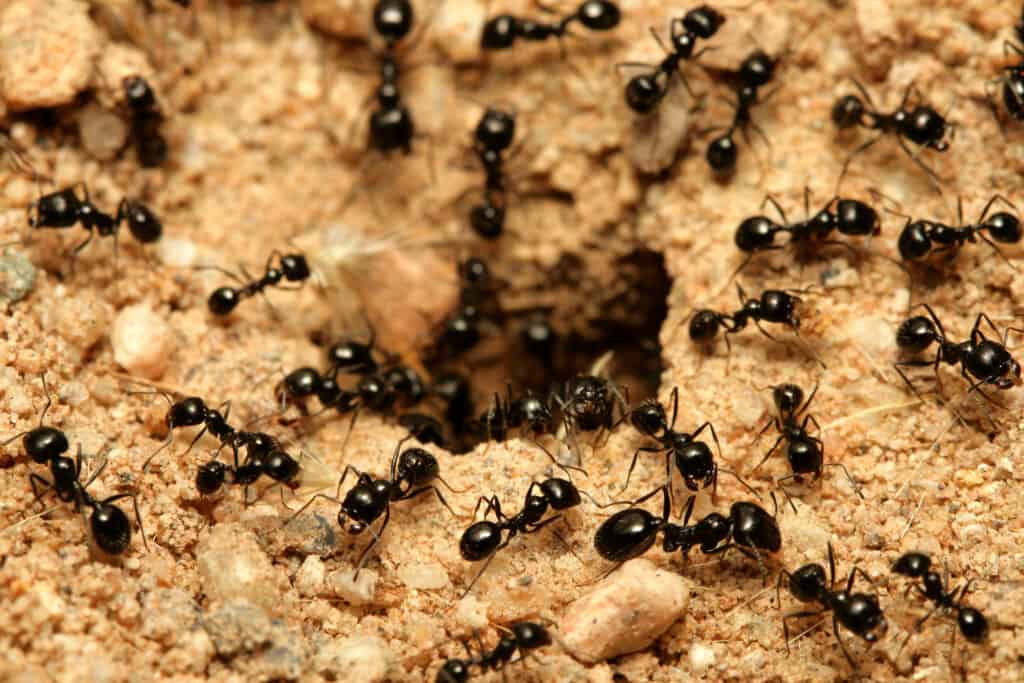
Ants socialize and work together in the thousands to survive and prosper.
©iStock.com/Cabezonication
14. Killer Whales
One of the biggest animals in the world, killer whales, is the one animal in the sea with no natural predators. Additionally, they tend to frolic in groups. Killer whales are among the most social animals in the ocean and will swim together in pods. Likewise, they also enjoy jumping and diving in circles around each other. The numbers can vary, depending on the orcas. For example, some orcas will travel in groups of five. But there will also be larger pods that consist of 50 killer whales.
Killer whales also use underwater sounds to feed or communicate, according to the National Oceanic and Atmospheric Administration. Amazingly, the NOAA also revealed that orcas use clicks and whistles to communicate with each other. They do this to keep themselves in sync with one another.
Killer whales also coordinate together to hunt prey. Ultimately, it is not uncommon to see them working with one another to hunt seals or any other fish they can catch. It makes them among the most social animals still roaming the planet and scouring the seas.

Killer whales are among the most social sea creatures in the world and are almost always swimming in pairs.
©slowmotiongli/Shutterstock.com
13. Coyotes
That howling you often hear in the distance is the social tactic that coyotes use to communicate with each other. Yes, coyotes often use this tactic to talk to one another while also signaling a possible animal to catch.
Some people mistakenly believe coyotes are lone hunters. Yes, they do hunt alone for the most part. Coyotes will join groups to hunt animals if the situation arises, according to the National Park Service. Also, they know how to work with other animals to catch prey. Coyotes sometimes follow crows to find food. Other times, they work with badgers to hunt in a weird, unholy alliance.
Coyotes have often delivered a barrage of sounds to communicate. Sometimes, it is a way to greet other coyotes or to signal an alarm. They also use it to display their prescience to other coyotes in the group. Curiously, they look and sound like a mixture of wolves and dogs. Their ability to vocalize what they want makes them one of the most sociable animals living on the planet.

Coyotes often hang in a pack and can communicate with each other through howling or barking.
©Josef Pittner/Shutterstock.com
12. Hippos
It is not surprising that hippos are among the most dangerous animals in the world. Yet, they are also incredibly social creatures when interacting with one another. They stick to their groups from the beginning of their lives. In fact, most hippos usually hang out in groups of 20 to 100, according to the African Wildlife Foundation.
It usually also includes a leader, who is a territorial bull hippo that watches over the group and also forces challengers out. Despite their social order, the males will often engage in fierce battles to establish hierarchy.
This social order also helps protect their territories against other predators. For example, hippos are more likely to stick together to ward off a pride of lions or crocodiles to prevent fatalities on their side. This social structure helps them survive. Therefore, hippos are definitely among the most social animals still roaming the planet.
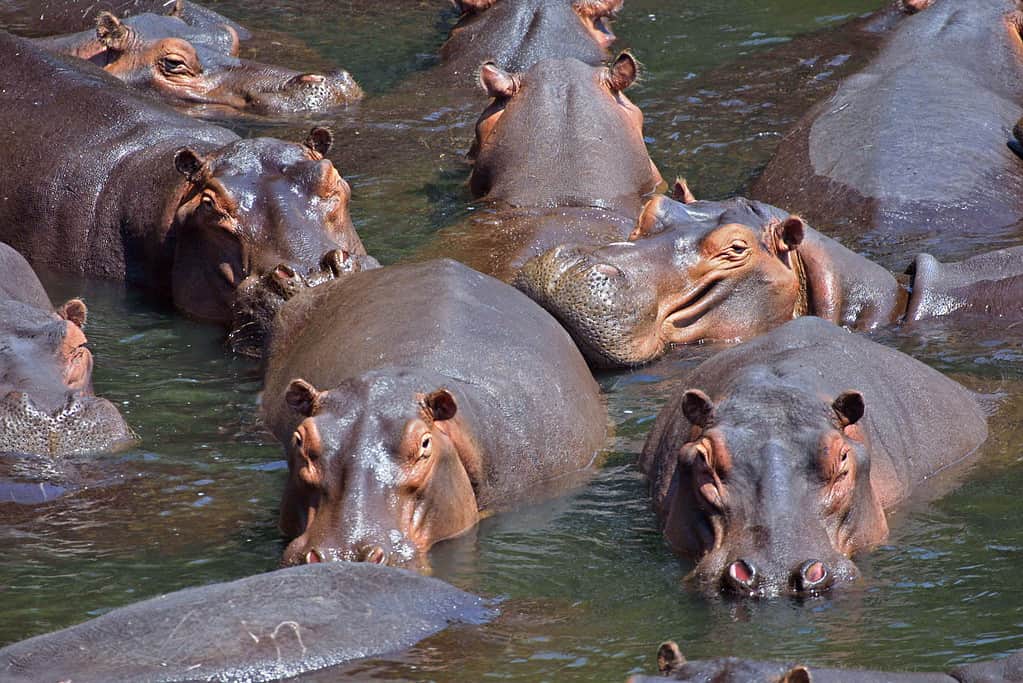
Hippos are one of the most social animals in the world, as they are always hanging out in groups.
11. Wildebeest
If you have ever watched any videos in Africa, you probably are familiar with wildebeests. Significantly, these animals always travel in groups. But they are also territorial with other wildebeest who are not part of their group. Therefore, you will often see clashes among territorial lines.
Wildebeests live in large groups. Ultimately, they do this by necessity as it helps protect them from predators such as lions and crocodiles. Wildebeest travel in groups that range between 10 to 1,000, according to the Audobon Nature Institute.
They also use that group cohesiveness to travel thousands of miles together. Moreover, they do this while still protecting each other from predators. This teamwork makes them among the most social animals still roaming the planet.
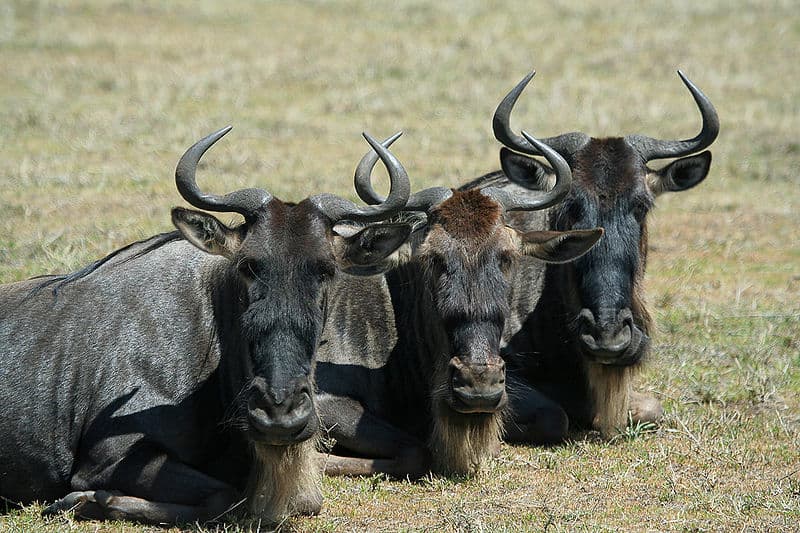
Wildebeest hang in large groups, which helps them ward off attacks from lions.
©Unununium272 assumed (based on copyright claims), CC BY-SA 2.5, via Wikimedia Commons – Original / License
10. Hyenas
The ultimate scavenger, the hyena is rarely ever alone. Instead, they hang out in groups together to try and get any food they can acquire. Hyenas are among the most social animals in the world and continue to survive based on their abilities.
Hyenas have the ability to adapt to any situation to make a social decision, according to a paper shared in the National Library of Medicine. Furthermore, spotted hyenas, in particular, have adapted scent behaviors. This allows them to create a system where they mark their specific territories.
Hyenas are among the best scavenger animals in the world. Thus, anytime there is a chance to grab some food from a nearby source, they will use any sounds to communicate and coordinate what they are going to do.
Spotted hyenas also have incredible social memory. Thus, it allows them to remember any members of their clan. This helps them remember members of their family who they might not have seen in one to two years.
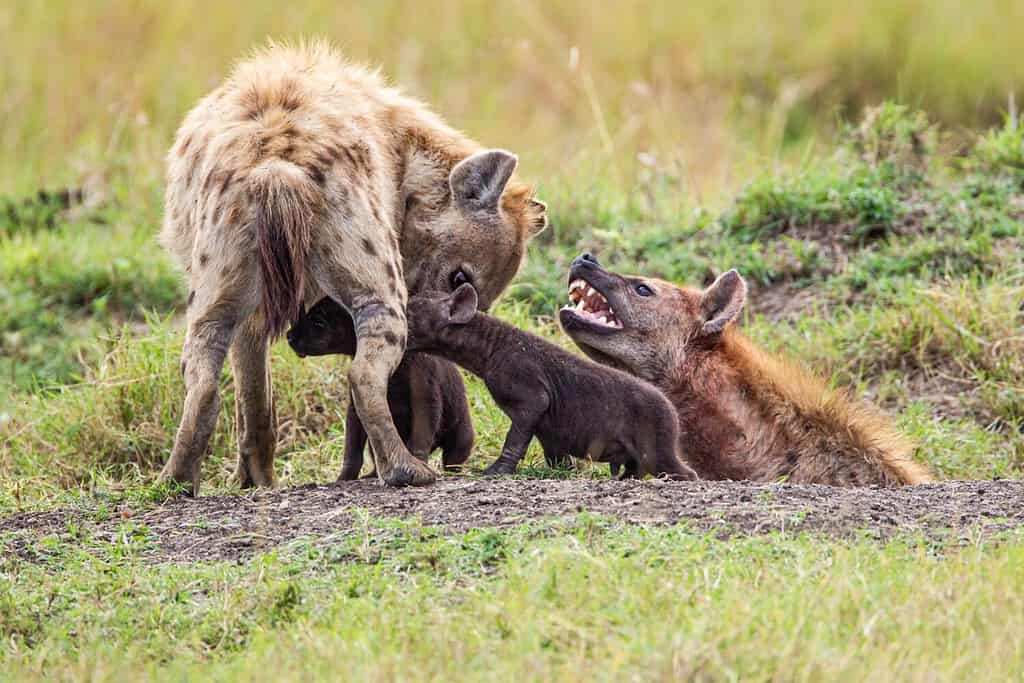
Hyenas always hang in groups to scavenge and learn how to survive.
©Wayne Marinovich/Shutterstock.com
9. Penguins
They are probably among the cutest animals on this list. Yet, it would be unwise to ignore the amazing coordination of penguins. These creatures swim in groups and eat together, according to Sea World Parks & Entertainment.
Penguins also drive together and eat in groups. However, there will always be certain situations where a solo penguin eats by itself. Penguins breed together in large colonies called rookeries. Amazingly, some of these rookeries will feature hundreds of penguins.
When penguins hand out on land, the group is referred to as a “waddle.” Conversely, when they swim together in the water, they are collectively referred to as a “raft.” Penguins are, of course, one of the most social animals still roaming the planet today.

You will rarely see a lone Penguin as they are almost always together in every scenario.
©N8tureGrl/ via Getty Images
8. Otters
One of the few animals you might not expect on this list is the otter. Yes, the otter is a sociable creature. While adult male otters hang out alone or with other males, female otters form large groups with their young and old offspring, according to the San Diego Zoo.
Larger otter groups come together during feeding time. Thus, it establishes communication between several groups that allow them to congregate. It also helps them survive as they hunt together. Thus, seat otters use their social skills to look for food. Otters spend a good portion of their days looking for food and utilize their communication skills to do so.
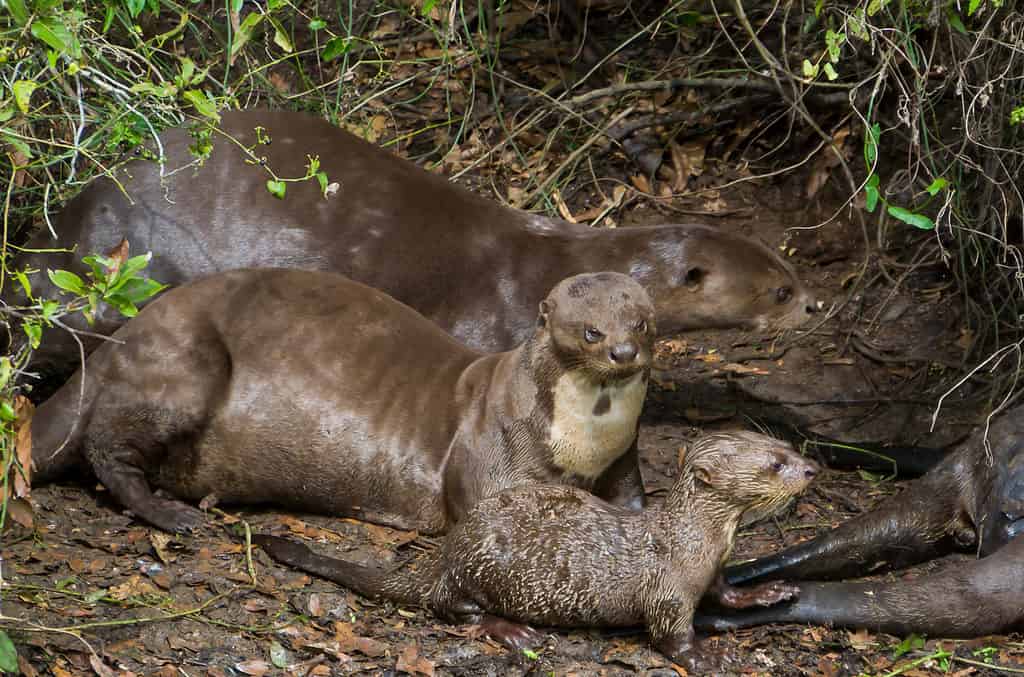
Otters are incredibly social creatures that have approached humans in the wild.
©ThiagoSantos/Shutterstock.com
7. Bees
The buzzing sound you hear is the sound of bees establishing a rapport with one another. Ultimately, a majority of the bees are solitary animals. But nine percent of bees are social creatures. Moreover, these bees are incredibly social and use those skills to survive and thrive.
Honeybees are an example of bees that live in large colonies, according to the Paleontological Research Institution. Additionally, these bees create swarms to create new nests. Other bees, like bumble bees, live in smaller colonies. Usually, a single female creates the colony and constructs the nest while laying eggs.
Bees work together to create nests and hives in complete unison while also understanding each bee’s task. Ultimately, they work together to communicate what the hive needs and it helps them survive.
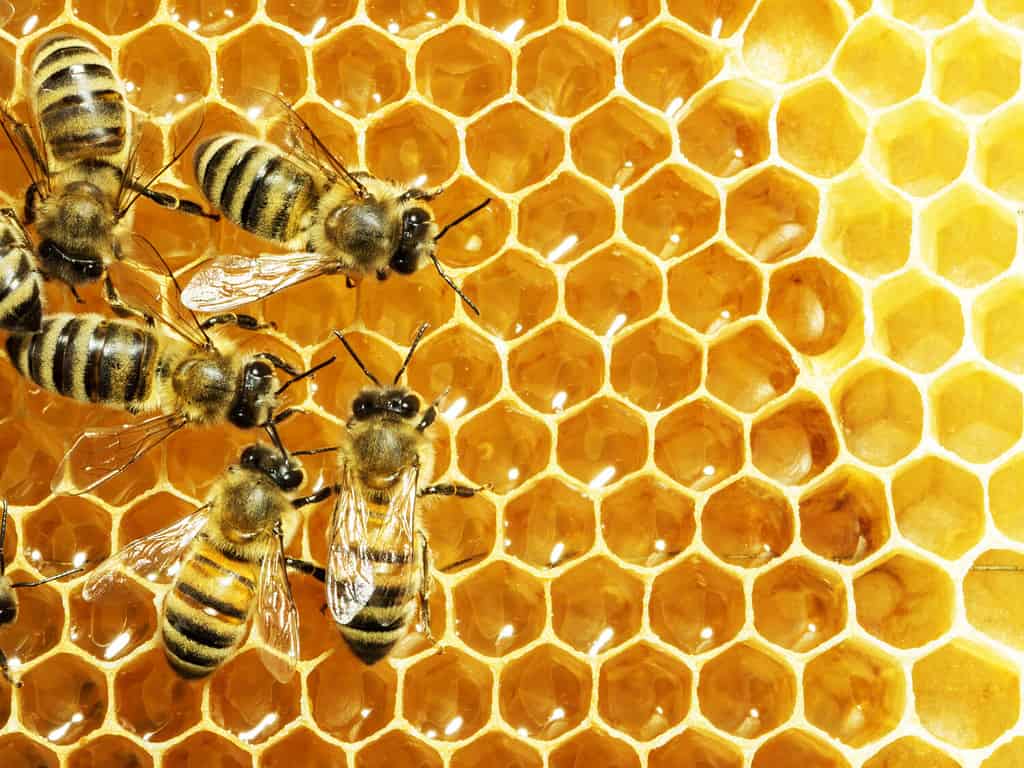
Bees work together all the time to build nests and collect food.
©StudioSmart/Shutterstock.com
6. Wolves
The best way to understand the wolf is to understand its sole behavior. Ultimately, you have probably heard of the term “wolf pack.” This term did not haphazardly. Instead, it defines the realistic behavior of wolves.
Like other animals, wolves work in groups and form a hierarchy, with each wolf having an assigned role, according to an article submitted to the National Library of Medicine. They hunt in groups and also care for the young wolves in groups. Amazingly, their socialization patterns begin when they are four months old.
Cubs follow adults on hunting trips. Thus, they learn how to work together as a team at a very early age. This collaboration helps them improve their motor skills and gain better social skills as they age. Ultimately, this trait helps them land on this list.
Cubs follow adults on hunting trips. Thus, they learn how to work together as a team at a very early age. This collaboration helps them improve their motor skills and gain better social skills as they age. Ultimately, this trait helps them land on this list of the most social animals still roaming the planet.
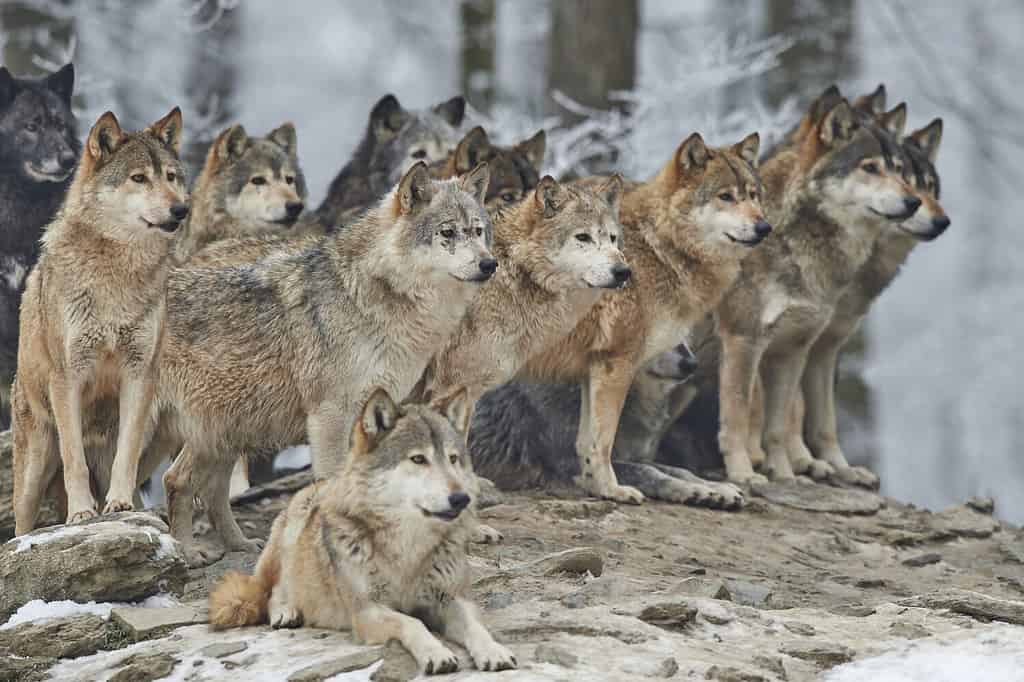
A pack of wolves is a common saying in life, but it also accurately describes their social behavior in the wild.
©Michael Roeder/Shutterstock.com
5. Chimpanzees
The most important thing to remember about chimpanzees is how they are genetically the closest animal to humans. Remember, humans are incredibly social creatures. They almost always need someone near them to stay emotionally upright. Similarly, chimpanzees possess these traits.
Chimpanzees live and also migrate in numbers that range between 30 and 80 members, according to the Los Angeles Zoo. Like humans, they also tend to separate into smaller groups and congregate among one another. While many animals form in groups for the sole purpose of hunting and surviving, chimpanzees also just hang out in groups when there is nothing to hunt and no predators to evade. Often, chimpanzees laugh together.
Chimpanzees also play games with one another to entertain themselves. Therefore, it is something that you rarely see in other animals. It also endears them on this list as one of the most social animals still roaming the planet.

Chimpanzees display social behavior with their emotions and actions, making them incredibly sociable creatures.
©abadonian/iStock via Getty Images
4. Elephants
It is amazing the social abilities that elephants possess. Amazingly, elephants have remarkable memories that allow them to remember details about people and other animals. There was an event where a herd of elephants attended the funeral of a man who saved one of their lives. Yes, they can mourn just like humans.
Elephant herds can vary. Significantly, you might see two elephants traveling together. There are also scenarios where you may see 24 elephants traveling together. Ultimately, when there are more than ten elephants, they generally split off into two separate groups, according to the South African National Parks.
While an elephant is the largest animal on the planet, they still travel in groups for protection from any predators that might believe they can take them down. Thus, they use their large numbers as a shield, especially for younger members of the herd.
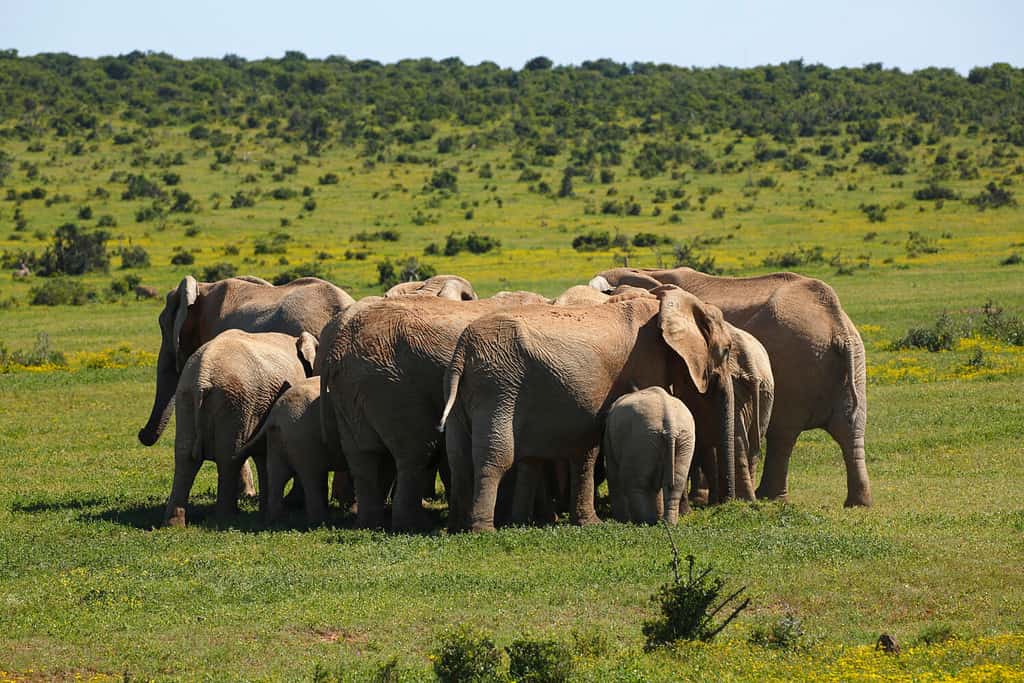
Elephants are among the most social creatures on the planet for their ability to showcase emotions, remember events, and act on them.
©imageBROKER.com/Shutterstock.com
3. Dolphins
If you have ever been in the ocean, you might have encountered a pod of dolphins. Amazingly, these majestic creatures swim up and down the coast and have reportedly interacted with humans on their journeys. There have been situations where a pod of dolphins surrounded surfers in the water in California for no reason other than to be there.
Coastal bottlenose dolphins have varying numbers. Sometimes, you might see two. There will be other situations where as many as 15 dolphins swim by, according to Sea World Parks & Entertainment. Significantly, they swim together to hunt prey and also protect themselves from any attacks from sharks.
Dolphins also play with each other by swimming around one another. Additionally, they blow air rings with one another. Their level of play starts at a young age, and the playful behavior helps them interact with members of their pod. This behavioral skill makes them one of the most social animals still roaming the planet and covering our oceans.

Dolphins have historically been very social creatures, with some interacting with humans in the wild.
©Tara Lambourne/Shutterstock.com
2. Lions
The structure of lions starts from birth. Ultimately, lions are composed of a pride. It usually consists of one or two male lions and multiple lionesses, along with numerous cubs. Hence, this structure makes the lion one of the top social animals in the wild.
Lions are the one animal that is well-known for actively hunting in groups. First, cubs learn how to hunt from adult lionesses at a young age. While male lions can hunt, they use their skills to protect their pride instead. Sometimes, male lions work with the lionesses in the pride to hunt and take down larger animals. But lionesses do the work for the most part, and they achieve this by working in a cohesive group.
The only time lionesses are not together is when they are hunting or giving birth, according to the Kariega Game Reserve. Furthermore, their bond grows through each day, each hunt, and each moment they spend together. Even male lions form bonds with their lionesses when they are not protecting the kingdom.
Lions learn their social behaviors at an early age. Curiously, cubs wrestle with one another as a way to establish a bond while also gaining strength. When cubs grow to maturity, they leave their pride and look for another pride to take over. Then, if they succeed, they mate with the lionesses and form their own pride. Lions will always need each other as their social behaviors prevent them from truly becoming solitary animals. Subsequently, it is what earned them one of the top two spots on this list.

Lions are born into a pride and taught from birth to seek their own pride. The social structure is among the strongest in the world.
©Howard Darby/Shutterstock.com
1. Dogs
The most social animals on the planet are dogs. You know them and love them. Ultimately, dogs are the most social animals for their ability to interact with other dogs, other animals, and humans. Dogs have the ability to adapt to any situation. Uniquely, it puts them in a category of their own.
Dog behavior depends on numerous factors, according to NI Direct Government Services. Moreover, factors such as breed and type can affect how a dog acts. But dogs generally are playful animals. Also, they need social interaction, similar to humans, to not become distressed or introverted. When people take their dogs for walks, it is to get them exercise and also acclimate them to other dogs.
Dogs have a complicated relationship with cats. Regardless, there have been millions of examples of dogs coexisting with cats and playing with them. Their ability to adapt to an animal that many see as their natural enemies is an incredible skill that not many other animals display.
Dogs made this list especially because of their relationships with humans. Ultimately, it takes a little while for a dog not to see the human being as a threat. But dogs eventually can see humans as friends and know how to read any body language a person displays. While wild dogs can be dangerous to human beings, there have been examples of them showing kindness to people.
Wild dogs that are not domesticated display an amazing ability to work in tandem. Similar to wolves and coyotes, they have the distinct ability to communicate with one another through barks, howls, and growls. This distinct feature, along with all their other traits, makes them the most social animals living on the planet today.
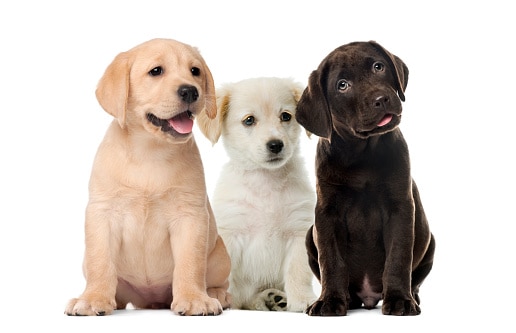
Dogs are the most social creatures on Earth for their ability to socialize with each other and humans effectively.
©iStock.com/GlobalP
| Rank | Animals |
|---|---|
| 1. | Dogs |
| 2. | Lions |
| 3. | Dolphins |
| 4. | Elephants |
| 5. | Chimpanzees |
| 6. | Wolves |
| 7. | Bees |
| 8. | Otters |
| 9. | Penguins |
| 10. | Hyenas |
| 11. | Wildebeests |
| 12. | Hippos |
| 13. | Coyotes |
| 14. | Killer Whales |
| 15. | Ants |
Thank you for reading! Have some feedback for us? Contact the AZ Animals editorial team.








